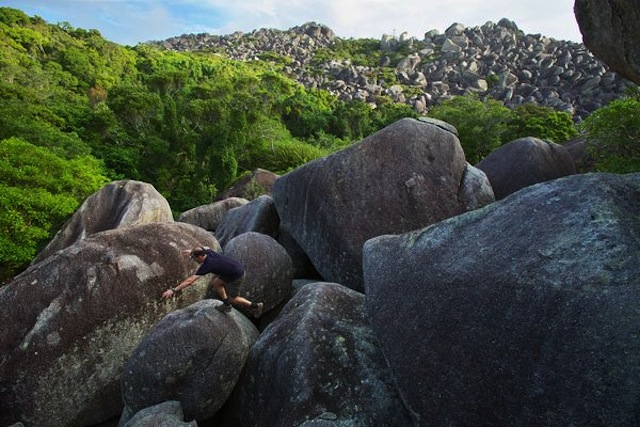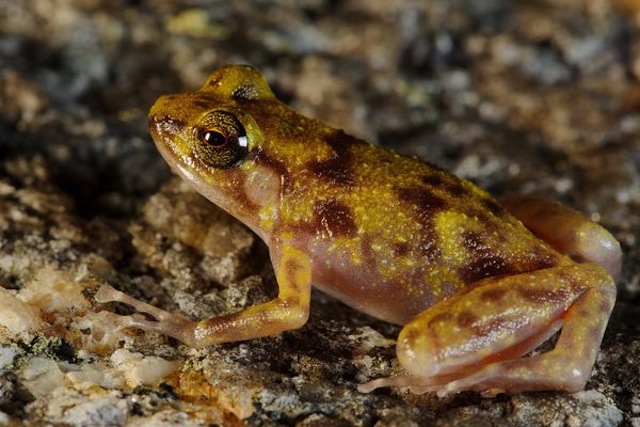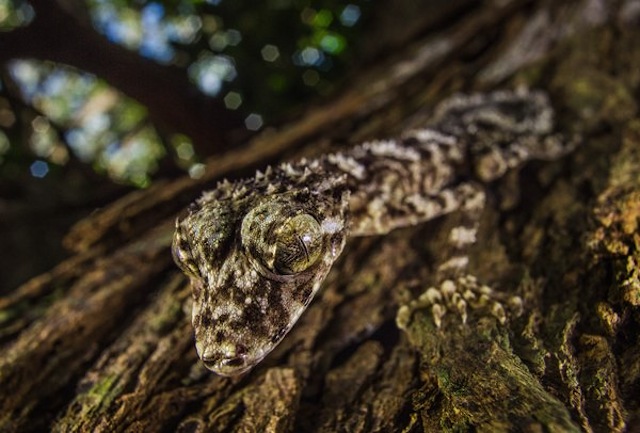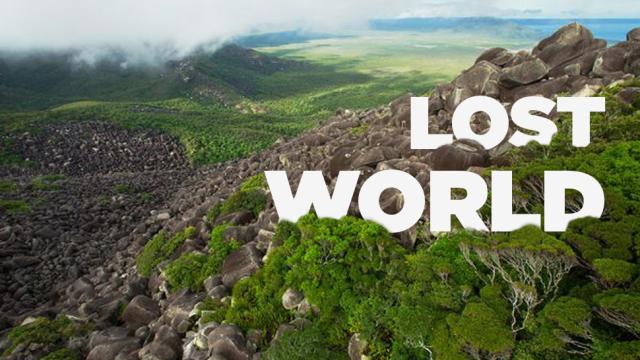For the past few millennia, the dewy rainforests of Australia’s Cape Melville have remained totally isolated from human interference. That is, until a team of scientists from James Cook University took humanity’s first steps into a land untouched by time. What they found there was almost beyond belief.
Calling the unprecedented discovery a “lost world”, the scientists were only able to reach the roughly 5sqkm patch of land by helicopter thanks to the “monstrous wall” of “millions of giant, piled up boulders the size of houses and cars”. And if that’s not enough of a challenge for you, this impassable monument to nature’s prehistoric processes extends for a grand total of nine miles. How, then, did Dr Conrad Hoskin, one of the leaders of the expedition, find this discovery of a lifetime? The same way we find anything these days: Google.
Dr Hoskin had known about the range for more than a decade, but the seemingly insurmountable obstacles to reaching it had limited scientists to doing research in the range’s lowlands. With the advent of Google Earth, though, and its revelation of the lush tiny patch of green atop piles of monstrous black granite boulders, he was inspired to take a second look. But no satellite imagery could prepare him for what he was about to see.

Image: Tim Laman, National Geographic
The Lost World
The second the team of NatGeo-funded scientists stepped of their helicopter, they quickly realised they were stepping down into a land actually frozen in time, the kind of stuff we’ve only ever been able to see in movies. The “incredible rainforest”, “good earth” and “clear, flowing streams” weren’t even the exciting part. The truly amazing part were the incredible creatures that had been “isolated from their closest cousins for millions of years.” As Dr. Hoskin told The Telegraph:
We’re talking about animals that are ancient — they would have been around in the rainforest of Gondwana… rainforest that’s been there for all time. I was just walking around along the ridge line and there was this small lizard, a skink, that was something completely new.
Modern skinks generally scurry around in beds of leaves, keeping close to the ground where its safest for them. This evolutionary ancestor jumps from damp, mossy boulder to mossy boulder on its hunt for insects.
The second groundbreaking discovery was something that Dr Hoskin had spotted transiently before but hadn’t been able to identify until now — a “beautifully blotched frog with orange in [its] legs.”

Image: Tim Laman, National Geographic
Hoskins dubbed the incredible new amphibian the Blotched Boulder-frog for obvious reasons, and one of the most interesting things about this creature compared to its more evolved cousins is the fact that it doesn’t need a pond to reproduce. This frog species needs only the moist cracks of the rocks that make up its home to lay eggs. Because there’s no protective body of water, the tadpoles develop into fully formed froglets before they even start hatching.

Image: Tim Laman, National Geographic
But the biggest moment of the brief trip didn’t come until sunset.
And then, coming back by night, we saw an incredible leaf-tailed gecko. This thing was mind-blowing, completely bizarre. It’s really big, around eight inches with long spindly legs and huge eyes.
That this gecko was hidden away in a small patch of rainforest on top of Cape Melville is truly remarkable. What makes it even more remarkable is that two other totally new vertebrates were found at the same time.
Even Patrick Couper, the Curator of Reptiles and Frogs at the Queensland Museum and a collaborator on the gecko’s description, called what’s now been dubbed the Cape Melville Leaf-tailed Gecko the “strangest new species to come across my desk in 26 years working as a professional herpetologist.”
According to Dr Hoskin, the unusually long legs of the gecko allow it to move quickly through such an uncommonly rocky landscape, and its big, bulging eyes allow it to better navigate between the boulders’ deep, dark crevices.
What Lies Ahead?
And the really exciting part? We’ve only just begun uncovering this spectacularly unknown land. As Dr Hoskin told The Telegraph, they’ve only documented about a tenth of the area, and many more new species “including, perhaps, birds mammals, plants, and more invertebrates” could be just on the horizon.
And though this isn’t the first time we’ve uncovered a part of Earth untouched by the passage of time, Dr Hoskin believes that if anything’s likely to “harbor something amazing,” it’s going to be right there in that incredible patch of green atop a rocky throne.
So to anyone still holding out dreams for a real-life Jurassic Park, give thanks to Google Earth. Because this is likely as close as we’re ever going to get. [National Geographic, The Telegraph, RT]
Pictures: Tim Laman, National Geographic
